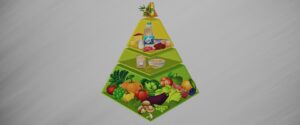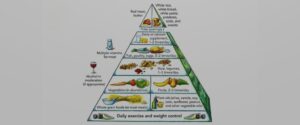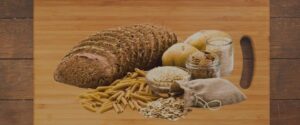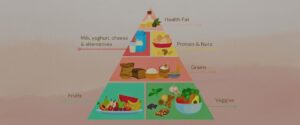You are not alone if you feel exhausted from trying to keep up with shifting dietary recommendations and define a balanced diet for yourself. Health recommendations are constantly evolving.
The Pyramid for Healthy Eating has been promoted for a long time as the best resource for making informed decisions about what to eat. But as nutrition science progresses and dietary requirements evolve, the question arises: is this food pyramid still applicable in the modern era?
In this post, I’ll give some background on the origins of this Healthy Eating Pyramid, discuss some of its issues, and then compare it to some of the more up-to-date healthy eating methods. Relax with some refreshments and listen in.
How do you define a Healthy Eating Pyramid?
Although the food pyramid’s origins are murky at best, the current iteration of the guide to healthy eating was first introduced in 1974 in Sweden and then again in 1992 by the United States Department of Agriculture (USDA).
The USDA’s version, however, did not have a trouble-free rollout. The food industry’s desire to shape federal dietary guidelines for its profit and worries over the size of food portions caused a year’s delay in the release, troubling in and of itself.
The Levels of the Food Guide Pyramid
 A Healthy Eating Pyramid comes in various shapes and sizes, with some having 4, others 5, and still others 6. However, the nutritional recommendations look like this when separated into their three main layers:
A Healthy Eating Pyramid comes in various shapes and sizes, with some having 4, others 5, and still others 6. However, the nutritional recommendations look like this when separated into their three main layers:
Foundation Layer
Exercising regularly and watching one’s weight are positioned at the base of this Harvard recommendation.
This revised version of the rules follows the 2016 revision. Whole grains like barley, rice, wheat, fruit and vegetables, fats like olive oil and avocado, and healthy oils.
Middle Layer
The middle layer includes dairy products like milk, cheeses, yoghurt, alternatives, and protein-rich foods like lean meat, seeds, eggs, nuts, chicken, legumes and fish. Also included are foods that get protein from plants, such as tofu, almonds, seeds, nuts etc.
Top Layer
On top, we have the things we should limit the most, such as butter, red meat, refined carbohydrates, salt and sugary sweets.
Modifications to the Food Guide Pyramid
Our evolving knowledge of health and nutrition has led to multiple revisions of the original food pyramid. Consider the evolution of the Australian food pyramid by comparing versions from 1982, ’86, ’99, 2004, ’07, and ’15.
Background on the Food Guide Pyramid

To better explain the various dietary groups recommended by the Swedish National Board of Health and Welfare, Anna-Britt Agnsäte created the food pyramid in 1973.
The United States Department of Agriculture (USDA) released its pyramid in 1992 and has revised it several times to account for new scientific findings.
The following categories of foods make up the pyramid:
Grains
Vegetables and Fruits
Diary, meats, eggs and beans
Sugary foods, fatty and oily foods
The lower tiers show items people ought to consume more, such as those that are nutritious, while the higher levels show things that people should eat less of. Although the dietary pyramid was intended only as a guide, its unique visual appeal ensured widespread adoption. The food pyramid consists of the following tiers:
Tier 1: Grains
Good illustrations for starches/complex carbohydrates and fibre are whole grains, bread and pasta. Because of their high caloric density, they occupy the bulk of the space on the traditional food pyramid. The food pyramid’s creators suggested eating anything from six to eleven ounces of grains daily.
Tier 2: Veggies and Fruits
The fibre and vitamins found in fruits and veggies are among the best you can find anywhere. Fructose, among other sugars, is abundant in many fruits. Approximately four servings of greens or veggies and about three servings of fruits daily make up the ideal diet.
Tier 3: Protein (Meat/Dairy/Beans/Eggs)
Carbohydrates ought to take up about half of your plate after protein. You can choose beans, rice, cous cous, potatoes, rice, beans, pasta, bread, whole grains and more.
The carbs in these foods are a vital fuel source for your body. Carbohydrates also aid in muscle protection, blood pressure maintenance, and cholesterol reduction.
Tier 4: Dairy Products
Protein is essential for the body’s growth and repair processes. You should eat a reasonable amount of dairy products every meal because it is in the middle of the pyramid.
Eggs, meat, dairy products and fish are good sources of high-quality primary protein (those of animal origin that are more easily absorbed by the body). You can meet your daily protein requirement from various sources, including meat and fish.
Tier 5: Sugary, Fatty, and Fried Foods
You’ll find fats and sweets in the healthy eating pyramid’s apex. These aren’t necessary for survival, so they shouldn’t make up much of your diet.
Limit your intake of high-calorie, low-nutrient processed foods like pies, pizza and ready meals, and baked goods like biscuits, chips, cakes, and pastries.
Saturated fats (often sourced from animals, like butter and pork) can elevate cholesterol and negatively affect health. Therefore, it’s best to limit or avoid them.
Fats, including healthy fats, provide energy and shouldn’t be fully cut out of the diet. The key is to identify which fats are beneficial and which are harmful. Olive oil, peanuts, soya beans, vegetable oils and olives are good sources of unsaturated fats, which are preferable to saturated fats.
The Revised Food Guide Pyramid

Newer iterations of the food pyramids have downplayed the pyramid’s tiers but kept the outline. Protein is at the base of the 2002 World Health Organization and Food and Agriculture Organization food pyramid, with fats in the centre and carbs at the top.
It shows what proportion of calories should come from various dietary groups. The new dietary recommendations make more nuanced differences than the pyramid representation allows, moving away from broad categories such as lipids, proteins, carbohydrates, etc.
Some oils and fats are better for you than others, and there’s a big difference between natural and added sugars in food.
The USDA’s most recent food pyramid depicts a runner up the side of the pyramid and vertically displays the various food groups. This diagram, easily a graph, hides essential information about the relative amounts of various dietary categories.
Updates to the Food Guide Pyramid

Today’s nutritional guidelines are more nuanced and sophisticated than the original 1970s approach. However, the most recent USDA MyPlate guidelines include these food groups in proportions on a circular glass and plate structure: grains, vegetables, dairy, fruits and protein.
While the food pyramid concept lives on in pop culture, nutritionists no longer support it.
Instead of focusing on the percentages and number of servings you get from various food groups, you should consider other factors, such as exercising and physical care.
Treating everybody similarly regarding health is no longer practical since people and their dietary demands are complicated.
What Are the New Recommendations for a Healthy Diet in Australia?
The Australian government has revised its healthy eating pyramid to help people make better food choices.
Nutrition Australia has modified the pyramid for the first time in fifteen years to try and clear up consumer misconceptions about nutrition and healthful meals.
What Science Reveals About Our Food Habits

The Australian national statistics agency conducted a food consumption study in 2011–12, asking respondents to record their 24-hour food, drinks, and nutritional supplements intake.
According to the survey results, “discretionary foods” accounted for over a third of the daily calorie intake. These foods are typically heavy in carbohydrates, salts and fats and provide little nutritional benefit.
The Australian Institute of Health and Welfare reports that about two-thirds of the adult population in the country is considered obese or overweight. Since 1995, there has been a 10% rise in this figure. One-quarter of Australian children are also considered obese or overweight.
The redesigned dietary pyramid aims to aid consumers and parents in combating the obesity epidemic by encouraging them to make healthier food selections.
The New Food Guide Pyramid

Legumes, fruits and vegetables form the basis of the revised pyramid. You ought to centre most of your diet on these. Quinoa, couscous, whole-grain cereals, and oats comprise the next tier of grains above them.
The following layer is divided, having half devoted to dairy products such as cheeses, yoghurts, milk and substitutes. The remaining half comprises fish, beans, poultry, lentils, tofu seeds, and lean meats. Olive oil and other healthy fats are at the pinnacle of the food pyramid.
The revised food pyramid stresses the importance of limiting the consumption of added sugars and salt. It’s also a great way to get folks to try new flavours. A glass containing water appears next to the pyramid to get people to consume more water.
To What Extent Did Things Alter?

The Australian Dietary Guidelines 2013 is the basis for the healthy food pyramid. Nutritionists and doctors considered 55,000 publications and journals when developing these recommendations.
The revised pyramid is based on recent nutrition and health science findings. This is the first iteration of this healthy food pyramid that does not include butter. Additionally, sugars and margarine have vanished.
The shift in the position of bread emphasises the importance of making fresh produce, beans, and fruits the backbone of one’s diet.
This is the first healthy food pyramid to include dairy alternatives, which had traditionally been excluded from the meat and dairy groups. Vegans and others who avoid dairy due to health concerns can rejoice at this development.
The revised pyramid clearly illustrates what a healthy diet should entail. Students across the country learn about the healthy food pyramid, giving it a platform to shape the diets of future generations.
Is It Time to Replace the Food Guide Pyramid?

So, yes, MyPlate officially replaced the pyramid in the United States in 2011. They simplified the Pyramid into a plate analogy to help people realise what a healthy diet should look like.
In contrast, many people viewed MyPlate as a positive development. A balanced diet should constitute no less than half of fruits and vegetables. The guide provided additional guidance regarding portion sizes.
However, important information, such as what sort of grain, still needs to be included. Where can I get protein sources? How are veggies and grains cooked, and with what fats?
When it comes to grains, MyPlate doesn’t differentiate between whole grains and more processed, easily digestible grains. Neither do leaner protein sources like fish and legumes get preferential treatment versus red meat.
It also doesn’t stress the importance of limiting your intake of saturated fat like meats and dairy products and increasing your intake of healthy unsaturated fats and omega-3 oils.
Not only does it not address the relationship between diet and physical activity, which is essential to our health, but it also needs to acknowledge the prevalence of processed and sugary foods in the average American diet.
What to Eat on the Harvard Diet Plate

The Harvard version of the Healthy Eating Plate diagram includes much of the information missing in the first USDA MyPlate diagram, so it’s worth checking out if you follow MyPlate.
It emphasises the significance of water consumption and physical activity. It provides more specific details on the kinds of vegetables, proteins, fruits and whole grains that should make up your diet.
Australia has its take on this as well. The Australian healthy eating plate is a graphic representation of the daily recommendations for the intake of all five food groups. At the very bottom of this edition, labelled “sometimes foods,” you’ll find sugary and processed foods.
Alternative Methods for Maintaining a Healthy Diet
Everyone has their definition of what constitutes a healthy diet, but the guidelines outlined in the Healthy Plate icon provide a solid starting point.
The Mediterranean Diet is one of the most well-known substitutes for the Healthy Pyramid/Plate. The Mediterranean diet represents a manner of eating based on the culinary traditions of the nations bordering the Mediterranean Sea. These countries include Spain, Greece and Italy.
In this eating plan, whole foods, minimally processed meals like vegetables, fruits, whole grains, beans, olive oil, seeds and nuts take centre stage. It also includes some red meat, although not much, and fish, dairy, and wine.
It’s based on the same principles as the Food and Agriculture Organization’s MyPlate and the Healthy Eating Pyramid.
This tells us that there are some universally accepted guidelines for good eating, whether you follow MyPlate, the Good Eating Pyramid, or any other method. Here are a few examples of nutritious meal options:
MyPlate
The food pyramid provides a useful starting point for establishing an essential nutritious diet, even though no dietary standards or instructions laid forth by health specialists can ever be flawless.
However, if the healthy eating pyramid is too complicated or unhelpful, there are extra resources to turn to.
The Mediterranean Diet?
The term “Mediterranean diet” refers to the eating patterns that have gained popularity in several nations around the Mediterranean coast. These countries include Italy, Spain, Morocco, Lebanon and Greece.
The World Report and the U.S. News describe it as an approach to eating that emphasises the overall quality of one’s diet as opposed to the quantity of any particular food group or nutrients.
The staples of the Mediterranean diet are fresh produce, legumes, olive oil, whole grains, fish and nuts.
The quantity of food someone eats on a diet is determined by their individual needs, as there are no portion size suggestions or computations associated with the diets.
According to nutritionists, there is no magic diet that can help everyone. Some diets are better for you based on your lifestyle and medical history. Anyone thinking about making dietary changes should talk to their doctor first.
The Harvard School for Public Health notes that the Mediterranean diet emphasises healthy fats such as avocados, sardines, extra-virgin olive oil, almonds and salmon. We only eat red meat a few instances a month at most.
Dietary staples include various fruits and vegetables and other plant-based alternatives to meat for protein.
Harvard School of Public Health recommends eating fish at least twice per week and consuming lesser amounts of other meat and dairy products, including cheeses, eggs, poultry and yoghurt.
The moderate consumption of wine is characteristic of the Mediterranean diet, of course, entirely voluntary. One or two glasses of wine daily is considered moderate for males, while one glass is moderate for females.
However, you should limit your intake of sweets, butter, highly processed foods, frozen dinners, candy, oils and refined grains.
In the words of U.S. News & World Report, there is “little area for saturated fats, processed sugars, and salts that overwhelm the conventional American diet” on this diet.
The World Report and the U.S. News claim that those following a diet similar to the Mediterranean live longer, are happier, and are less prone to developing chronic diseases like heart disease and cancer.
According to the American Heart Association, the Mediterranean diet could “play a substantial role” in decreasing cardiovascular disease and stroke risk factors. In particular, the AHA suggests that virgin olive oil consumption may aid the body’s ability to “remove high cholesterol levels from arteries and maintain blood vessels open.”
According to the Cleveland Clinic, the Mediterranean diet can aid with weight maintenance, preventing cognitive decline with age, extending life expectancy, promoting gastrointestinal health, and decreasing cancer risk.
Nutritional Advice From MyPlate and Australia’s Food Guide

The healthy eating plate is yet another iteration of the healthy living pyramid. Instead of arranging the food groups in a pyramid, this visual representation arranges them on a plate and displays the amounts like a pie graph.
Modifications to the plate aesthetic include notes on drinking, snacking, and hydration. Some plates also feature reminders to get some exercise every day. One method to improve one’s health is to follow the plate’s design, which offers advice on a broader scale than mere nutrition.
The United States Department of Agriculture (USDA) has updated its healthy eating plate with a quiz and data entry to determine what food you eat and provide better diet advice.
This is known as MyPlate. There’s a companion app that may offer healthy eating tips and recipes. This app provides a more individualised view of healthy eating than the healthy eating plate and provides recipes to back up the new approach.
This revision, in contrast to the outdated food pyramid, can help people maintain good eating habits and better reflect contemporary lifestyles.
While the food pyramid can serve as a good foundation for a healthy diet, there is a growing trend toward using apps to help people make healthier food choices.
Ten Easy Ways to Improve Your Health in 2023
Nutrition Action is the source of this article. We do not take any form of commercial or governmental sponsorship.
When Nutrition Action endorses a product, it is not because the company pays us; our nutritionists have thoroughly researched and evaluated it.
Increase your intake of healthy produce. Eat less sugar, less salt, and less saturated fat. Make the change to include whole grains. Work out and stay fit.
There are a lot of folks that are fully aware of all of that. But how can you apply those sweeping strokes to your daily choices? Here are ten of our top recommendations for kicking off 2023 successfully.
1. Make Beans or Lentils the Main Course and Cut Back on the Meat and Starch.
Nutrient-rich legumes are high in protein, magnesium, iron, folate and fibre. Bonus: they taste great. Try Kate Sherwood’s French Lentil Stew to keep warm this season.
2. More Nuts!
Seeds and nuts are great sources of healthful fats, Vitamin E, Zinc, magnesium and even a small amount of plant-based protein. You can sprinkle these on your salad instead of croutons, typically salty, white bread. (Toasting the nuts first will enhance their flavour.)
Extra thoughts: Sprinkle almonds or walnuts on your morning yogurt or porridge. You can also use toasted sesame/ tahini to flavour sauces and salads. You may make peanut curries, sesame noodles, and spiced peanut dressing with peanut butter.
3. Increase the Potassium and Decrease the Sodium per Serving by Including More Vegetables
If you order Thai or Chinese takeouts, add an ounce of broccoli that has been steamed or another vegetable.
Combine a pre-packaged salad mix with an assortment of raw lettuce. Use baby greens or spinach as a bed for your frozen dinner. This will increase the potassium and decrease the sodium in every bite.
4. Reduce the Amount of Sugar Intake
Adding fresh fruit to sugar-free plain Greek or normal yogurt is a winning combination. Add wild berries, mangoes, or cinnamon-stew apples from the freezer. Mmm.
However, some people don’t like plain yogurt. Many “light” yogurts also use artificial sweeteners like acesulfame potassium (ACE) and sucralose to reduce sugar. A few safe bets: Low-sugar Chobani and Oikos Pro are great options.
5. Stay Away From Sugary Coffee Beverages.
Espresso and coffee go best with water, ice or milk, water not sweetened syrups, heavy cream, or topping with whipped creams. This includes your standard latte, Americano, cappuccino (made with espresso and hot water), iced coffee or black coffee.
An easy way to cut down on the sugar in your cappuccino or latte is to stick to the traditional recipe of espresso and milk.
A standard sugar sachet or bottle of flavoured syrup contains roughly one teaspoon of pure sugar. Whipped cream at Starbucks has at least 70 more calories than sugar and cream.
6. Follow a Flexitarian Diet.
Eating less meat (particularly red meat), dairy products, sugars, and more veggies is good for the environment and your health. The flexitarian diet is versatile since it is largely (but not entirely) plant-based.
7. Pack Up Half of Your Restaurant Meal to Eat Later.
According to a recent study, Boston’s independent and small-chain restaurants’ typical entrée (including sides) had about 1,300 calories.
That doesn’t include anything sweet to finish it off. And they sampled a wide variety of international dishes from Greece, India, Vietnam, Mexico, Thailand, Japan, China, and Italy.
8. Vegetables Are a Great Way to Boost the Volume of Your Grains
Half a cup of grains isn’t that much. A tennis ball couldn’t be filled with that. Try quinoa or brown rice with roasted or sautéed vegetables as a solution.
Sautéed kale or spinach would go great with whole-grain pasta, or you could grill some mushrooms and zucchini with bell peppers and toss them all together. The vegetables have a double value: They improve flavour while decreasing calorie density.
9. Find Things to Enjoy About Physical Exercise
The thought of working out can be daunting. However, studies show that any form of physical activity helps keep your mind and body healthy.
Exercising can improve our cognitive abilities, sleep quality (both in terms of falling asleep fast and staying asleep), blood pressure control, insulin sensitivity, and stress levels.
Long-term exercisers enjoy a reduced risk of diabetes, cardiovascular diseases, and cancer.
How much should one exercise? Maintain a weekly exercise routine of two and a half hours of moderate intensity, including strengthening exercises. Even a little helps. Try to work up a sweat.
10. If You Need Help Resisting Junk Food, Try Any of Our Methods.
Calories, especially empty, cheap, and seductive ones, are everywhere. There is a steady onslaught of junk food whenever you shopping or running errands. The human brain isn’t wired to resist them, even if they’re bad for us.
Conclusion
The food guide pyramid has changed over the years to reflect advancements in nutrition science and societal perspectives.
The food pyramid has changed to reflect the growing trend away from animal products and toward plant-based diets, with separate sections for different grains versus unhealthy and healthy fats.
This food guide pyramid provides a high-level overview of what, according to modern scientific consensus, constitutes healthy diets. It is adaptable and aimed at satisfying a broad audience; depending on one’s lifestyle, the food pyramid may not be an appropriate guide for your diet.
The food guide pyramid can serve as a foundation for good nutrition and complement other resources.
Faqs
Which Food Pyramid Is the Right One and Why?

Use its most recent version if your country’s government makes a healthy diet pyramid available. There have been multiple iterations of this healthy eating guide since its introduction in 1992. The right one will be consistent with current theories on optimal nutrition.
Can You Name the Five Pillars That Make up the Food Pyramid?
The food guide pyramid’s five tiers stand for the various food groups. Food groups include carbohydrates, lipids, proteins, and fibre. The pyramid divides these food groups into equal-sized sections to illustrate how much you should consume.
Most of your diet should consist of plant-based foods, including grains, fruits and vegetables; the next largest portion should come from protein and dairy; and finally, the tiniest portion should come from healthy fats.
Should We Abandon the Food Pyramid?
New research has led to a revised structure of the original USDA food pyramid, but the basic assumptions remain the same. There has been a shift toward highlighting whole grains rather than refined grains, and there are now more options for people on limited diets.
What’s the Big Deal About the Food Pyramid?
The pyramid is a great place to begin if you want to improve your health. You can easily tell which foods you should eat more of because it lays out the food groups you should be consuming and the amounts you should eat from each group.
It’s a simple diagram that can direct families toward healthier eating habits.





